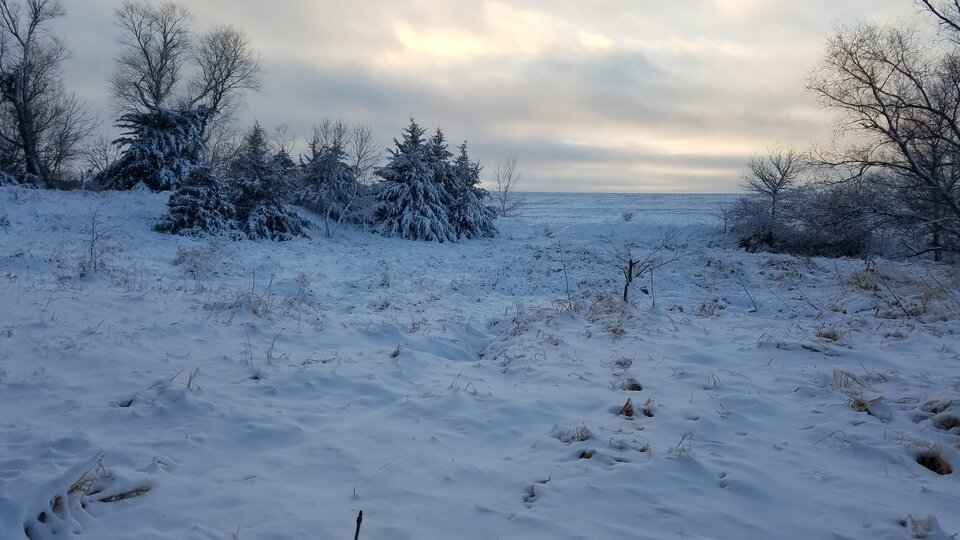Winter Plant Care

It’s definitely getting colder outside. Winter isn’t officially here yet, but it is on its way. This is the time of the year where we give up on plants, but there are some things to consider prior to winter to ensure their survival.
Winter Care of Turf
During the winter months, avoid walking or driving over frozen turf. If frost has formed and foot or vehicle traffic occurs, it can damage turfgrass. Winter traffic can cause cosmetic damage, physical abrasion, and/or soil damage depending on the situation. Too much traffic on turfgrass at a time when it cannot recover also leads to winter injury. If it isn’t damaged too badly, it will green back up in the spring, but it will take longer.
Deicers are another winter issue, select deicers wisely and use them according to direction. Deicers applied to surfaces may run off and enter soil or be splashed onto nearby vegetation. In soil, salts reduce the availability of water to plants, which can increase water stress during spring and summer. Essentially, the deicing products draw the water away from plant cells, which causes them to dry out and die. If splashed onto foliage it may burn and kill plants growing adjacent to roadways. Try to avoid piling the snow up in the same location on the edge of your lawn each time it snows to spread out deicers on the lawn and reduce the damage. You can also try kitty litter or sand or gravel to help get traction instead of deicers.
Winter Care of Trees
In the winter, we look to protect our trees from damage that can occur over the dormant season. We can have damage to the trunk of our trees from sunscald and from wildlife including deer and rabbits. Sunscald happens on warm days in the winter when the cells of the bark warm up and then freeze rapidly at night. Once the damage has occurred there is no cure for it, but you can use a tree wrap through the winter months to prevent the damage. Be sure to only leave tree wraps on for the winter months and only for the first few years of growth. As for wildlife, exclusion with a fence is the best defense. The fence needs to be at least 8 feet tall for deer damage and 2 feet tall for rabbits.
We also deal with snow and ice loads on trees. The best option is to just let it all melt naturally. Trying to knock ice off may result in broken branches. You may carefully brush snow off of branches if you think it is necessary but leave ice to melt naturally. As long evergreen branches are not broken, they will return to a normal position.
Winter Care of Perennials
Winter mulch can be applied when temperatures are consistently dropping down to the twenties each night. Winter mulch is applied to herbaceous perennial plants to protect them from temperature fluctuations. Any plants that were just planted this fall and those plants that are especially tender such as roses, Japanese bloodgrass, dwarf blue mist spirea and lavender could benefit from winter mulching. This mulch can be up to four inches deep for winter. This is a good use for the fallen leaves in our lawns, rather than leaving that on the turf leading to snow mold this winter. A mix of chewed up leaves and wood chips will make a great winter mulch.
Winter watering
Ensure adequate watering throughout the entire growing season for all trees and shrubs, especially those recently planted. Water throughout the winter when the ground is not frozen, as necessary. Winter watering should occur around midday on days when the temperature is at least 40-45 degrees Fahrenheit and is only necessary 1-2 times per month until spring. It is a good idea to test for soil moisture with a long screwdriver or soil probe prior to watering to determine if watering is necessary. If the screwdriver goes into the soil easily, watering is not necessary. However, if pushing the screwdriver into the soil is very difficult, plants should be watered.
This article was reviewed by John Fech